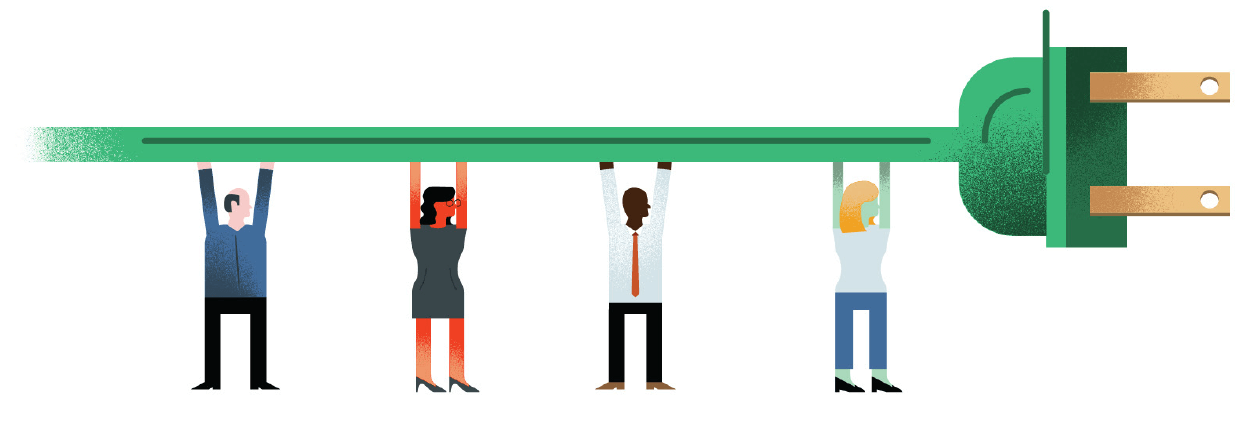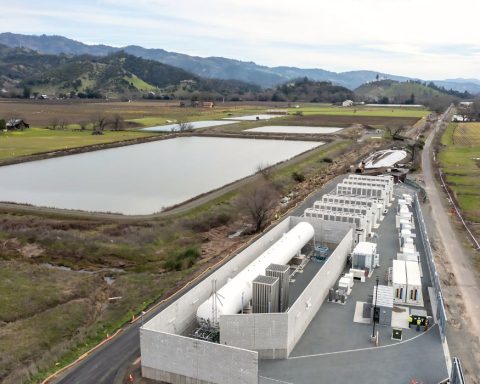When the Colahan family drilled an irrigation well for their cattle ranch in 1980, they discovered a problem commonly found by ranchers in the U.S. west. The water that emerged from the well was over 100 degrees C – too hot for irrigating crops.
To make use of the water, they had to build a two-acre cooling pond, which is a well-known practice in states such as Oregon, Idaho, Nevada and Utah. The Colahans also knew it was a waste of a valuable thermal resource.
But it wasn’t until 2008 that Mark Douglas and his wife Erin (maiden name Colahan) decided to do a feasibility study to find out just how that hot water could be harnessed. They discovered there was a business case for building a geothermal power plant capable of generating several megawatts of emission-free electricity.
It was a promising conclusion, but a vision not so easy to realize. Raising capital for such a project was too risky for the ranchers, and no private sector developer was interested in such a small venture. The risk was too high; the payback too low.
That’s when Surprise Valley Electrification stepped in. The Douglas-Colahan family was already a member of this rural electric cooperative, which saw the community benefits of having a local, renewable project as a stable source of electricity for other co-op members scattered throughout its 20,000-square-kilometre service territory.
As a non-profit co-op, Surprise Valley had more flexibility than a private developer. It could take on more risk and be comfortable with a lower return on investment, as long as its decision served the interests of its rural members. “We did not look at it just as a for-profit project,” said Lynn Culp, manager of member services at Surprise Valley.
The hope is that this small geothermal project, which is expected to be operational this year, will inspire other rural electric cooperatives to pursue similar projects within their service territories.
Electric co-ops are a surprisingly large force in the U.S. power market. There are about 860 rural electric co-ops serving 42 million people across 47 states, according to the National Rural Electric Cooperative Association.
Their combined generation, transmission and distribution assets are worth $140 billion (U.S.) and service about three-quarters of U.S. landmass. And despite their vocal opposition to U.S. carbon regulations – on the grounds that such rules take away their independence and flexibility – they currently own or purchase over 10 per cent of all U.S. renewable power capacity.
While rural electric co-ops have a rich, 80-year history in America, based on the U.S. government’s post-war campaign to bring electricity service to farms and remote communities, this utility model never gained a strong foothold in Canada, where most utility assets are owned by investors or the crown.
However, a new class of consumer cooperative has emerged in recent years to develop grid-connected renewable energy projects within local Canadian communities.
According to a 2012 report prepared for the Financial Services Commission of Ontario, there are more than 70 alternative energy co-ops in Canada. Of them, 26 per cent focus on biofuels, 22 per cent on wind and 13 per cent on solar. SolarShare, which develops community solar projects, and ZooShare, which aims to turn zoo animal manure into biogas for electricity generation, are among some of the co-ops that have emerged.
The greatest activity has been in Ontario, which passed green energy legislation in 2009 that encouraged community power development. The law, for one, assured fair access to the grid. It also led to the creation of a standard long-term purchase agreement, or feed-in tariff, for small developers such as co-ops that wished to sell locally generated renewable power to the province.
Armed with such an agreement, co-ops could begin signing up members and raise capital through the sale of “community bonds” that guarantee a specific return on investment for specific projects.
That kind of ground-levelling public policy is crucial if co-ops are going to play a larger role in a clean energy future, said John-Justin McMurtry, social sciences professor at Toronto’s York University. He said it’s also important that small co-ops developing renewable projects work closely together through federations, such as the Federation of Community Power Co-operatives, which was established in 2012.
Federations allow for knowledge transfer across co-ops and can double as buying consortiums for purchasing equipment, such as wind turbines and solar panels, at a lower cost than if an individual co-op acted alone. “By federating, you increase the efficiency of these organizations while still maintaining their democratic and community-based nature,” McMurtry said.
In the U.S., purchasing and knowledge-sharing consortiums have already emerged to help individual co-ops develop and finance solar projects.
McMurtry said co-ops, by their nature, have advantages over private developers that often face stiff community resistance to their projects. Co-ops are responsive to community concerns and tuned to their needs. They also return value directly to that community and operate in a transparent way.
With this approach, “you get community buy-in,” he said. “That’s the way to scale up.”







